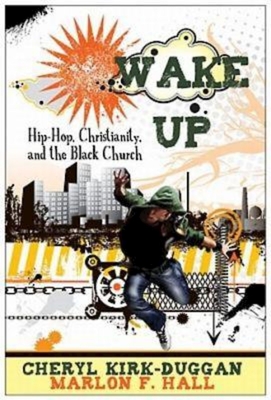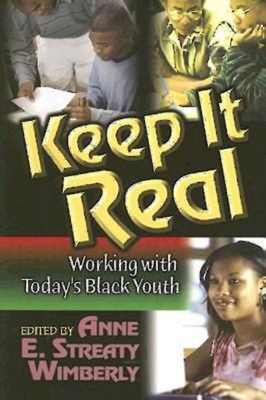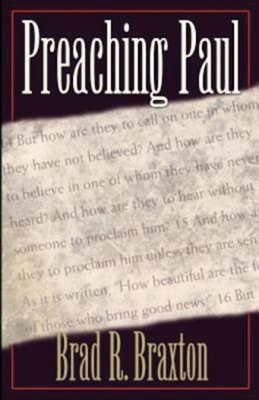6 Books Published by Abingdon Press on AALBC — Book Cover Collage
 How Sweet the Sound
How Sweet the Sound
by Vanessa MillerAbingdon Press (Mar 04, 2014)
Read Detailed Book Description
Shar Gracey wants nothing more than to sing the Lord’s praises, so she jumps at the chance to join a traveling choir led by the father of black gospel music, Thomas A. Dorsey. Better yet, the opportunity will give her money to pay for her ailing mother’s medical care. While on tour she falls under the tutelage of gospel great Mahalia Jackson—and falls for the handsome but not-so-great Nicoli James, whose desires for Shar are fueled by his own greed. Shar would do anything for Nicoli—and he knows it—so when his life is threatened after a night of gambling, Shar agrees to help pay Nicoli’s debt, only to have her faith and dreams shattered. Reeling from the betrayal, Shar loses her voice and she believes that she will never sing again. She has no place to run except back home to her seriously ill mother—and the man she left behind, who would move heaven and earth to make Shar’s pain go away. Even if it means he has to let her go … again.
 Wake Up: Hip-Hop, Christianity, and the Black Church
Wake Up: Hip-Hop, Christianity, and the Black Church
by Cheryl A. Kirk-Duggan and Marlon F. HallAbingdon Press (Jun 01, 2011)
Read Detailed Book Description
First an expression of black urban youth, Hip Hop music continues to expand as a cultural expression of youth and, now, young adults more generally. As a cultural phenomenon, it has even become integral to the worship experience of a growing number of churches who are reaching out to these groups. This includes not just African American churches but churches of all ethnic groups. Once seen as advocating violence, Hip Hop can be the Church’s agent of salvation and praise to transform society and reach youth and young adults in greater numbers.
After looking at Hip Hop’s socio-historical context including its African roots, Wake Up shows how Hip Hop has come to embody the worldview of growing numbers of youth and young adults in today’s church. The authors make the case that Hip Hop represents the angst and hope of many youth and young adults and that by examining the inherent religious themes embedded in the music, the church can help shape the culture of hip-hop by changing its own forms of preaching and worship so that it can more effectively offer a message of repentance and liberation.
 Long Time Coming
Long Time Coming
by Vanessa MillerAbingdon Press (Nov 01, 2010)
Read Detailed Book Description
Deidre Clark-Morris is a faithful Christian who has everything she could dream of, except the children her heart longs for. Kenisha Smalls has lived in poverty all her life. She has three children by three different men and has just been diagnosed with inoperable cancer. While the meeting between these two women appears accidental, it becomes their catalyst of hope. Neither woman expects the blessing that God has in store for her. While Deidre guides Kenisha on the path to eternal life with Jesus Christ, Kenisha teaches Deidre how to stand strong against the storms of life.
 Keep It Real: Working with Today’s Black Youth
Keep It Real: Working with Today’s Black Youth
by Anne E. Streaty WimberlyAbingdon Press (Oct 01, 2005)
Read Detailed Book Description
The first edition of Working with Black Youth, edited by Charles R. Foster and Grant S. Shockley, was published in 1989. Since that time the challenges for black youth have only intensified and grown in complexity. A burning question of Black churches continues to be: How can we effectively ministry with our youth? Youth want their questions heard. They want to see hope modeled. They need leadership opportunities.
While there are no quick, easy, or singular approaches to working with black youth, there can be a framework to offer vital and relevant youth ministry. This book proposes a comprehensive framework that has evolved over ten years of annual youth and family convocations of the Interdenominational Theological Center as well as youth and family forums and activities related to the Youth Hope-Builders Academy of ITC. The framework builds on the image of the congregation as a "village of hope" where pastors and leaders get real to offer the church as a place of support, guidance, and accountability for youth, parents, and other adults who are raising today’s black youth.
Contributors: Daniel O. Black, Philip Dunston, Maisha I. Handy, Michael T. McQueen, Tapiwa Mucherera, Elizabeth J. Walker, Herbert R. Marbury, Annette R. Marbury, and Anne E. Streaty Wimberly
Offers the "village of hope" as a framework where pastors and leaders offer the church as a place of support, guidance, and accountability for youth, parents, and other adults who are raising today’s black youth.
The first edition of Working with Black Youth, edited by Charles R. Foster and Grant S. Shockley, was published in 1989. Since that time the challenges for black youth have only intensified and grown in complexity. A burning question of Black churches continues to be: How can we effectively ministry with our youth? Their world is fast-paced, media-centered, techno-savvy, hip-hop, violent, and plagued with HIV/AIDS. The Church wants to guide youth toward a Christian identity with values for wise decision-making. Youth want their questions heard. They want to see hope modeled. They need leadership opportunities.
While there are no quick, easy, or singular approaches to working with black youth, there can be a framework to offer vital and relevant youth ministry. This book proposes a comprehensive framework that has evolved over ten years of annual youth and family convocations of the Interdenominational Theological Center as well as youth and family forums and activities related to the Youth Hope-Builders Academy of ITC. The framework builds on the image of the congregation as a "village of hope" where pastors and leaders get real to offer the church as a place of support, guidance, and accountability for youth, parents, and other adults who are raising today’s black youth.
Contributors: Daniel O. Black, Philip Dunston, Maisha I. Handy, Michael T. McQueen, Tapiwa Mucherera, Elizabeth J. Walker, Herbert R. Marbury, Annette R. Marbury, and Anne E. Streaty Wimberly
 Preaching Paul
Preaching Paul
by Brad R. BraxtonAbingdon Press (Dec 01, 2004)
Read Detailed Book Description
Helpful and insightful strategies for preaching from the writings of Paul. Few biblical figures are more compelling to preachers than the apostle Paul. The story of his dramatic conversion on the road to Damascus is a favorite example of the way that God turns lives around. His writings contain the earliest witness we have to the Christian gospel. His message of God’s offer of grace in the life, death, and resurrection of Jesus Christ is deeply appealing. So why is it that when it comes time to choose a text for this Sunday’s sermon, preachers so often choose something other than Paul? When Brad Braxton asked himself that question, he realized that preachers are often daunted by the size and complexity of the Pauline corpus. Drawing on his expertise as a New Testament scholar and homiletics professor, as well as on his experience as a pastor, Braxton offers the reader tools with which to wrestle more effectively with the complex, yet essential, message of Paul. Eschewing either a solely historical approach or a completely spiritual one, the author brings the two together to explore the meaning of Paul’s message in its original context, as well as its contemporary application. Written with imagination and depth of understanding, this book is for anyone who wishes to know Paul better and to preach from his letters more effectively.
 Benjamin Banneker: Genius of Early America
Benjamin Banneker: Genius of Early America
by Lillie PattersonAbingdon Press (Mar 01, 1978)
Read Detailed Book Description
True, young Benjamin’s "eyes fairly danced with excitement," but it’s contagious: this is an inspirational biography so thoroughly conversant with black aspirations and Maryland history (the author is a black Baltimore librarian) and so attentive to the particulars of its hero’s accomplishments as to make him a hero indeed. At six he becomes the proud co-owner of 100 "Crown Colony of Maryland" acres. From the Bible (and his grandmother) he learns to read; a Quaker schoolmaster opens up a "new world" of mathematics, of "parts to be added, divided, made larger or smaller, taken apart and put together again." On Patterson’s part, calculated words. The sight of a watch, and its loan, starts him building "the wonderful wooden clock" that first makes him famous. Educated neighbors, the Quaker Ellicotts, acquaint him with surveying and astronomy; and, at almost 60, he exchanges most of his farm for a lifelong annuity and time to pursue his new interests. Though the account is dramatized, what is invented is not implausible—and what is crucial or controversial is forthrightly stated. Banneker collaborates with Andrew Ellicott in surveying the land for the new capital city; then, after Pierre L’Enfant is dismissed, the two execute his plans. Did Banneker himself redraw the plans from memory? The evidence is lost, we’re informed; sufficient, the ascertainable. But what is most intriguing, and made Banneker still "more famous," is his almanac. From the details of its compilation—complete to original astronomical charts (B. Franklin’s were borrowed)—we come to appreciate its significance in demonstrating (as a publisher’s foreword noted) "that the colour of the skin is in no way connected with strength of mind or intellectual powers." So, BB, "philomath"—in the most meticulously appreciative young biography yet. —Kirkus Review
